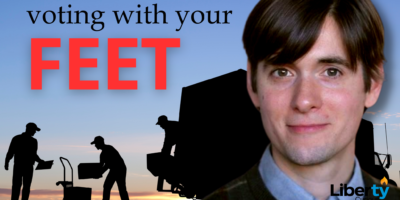Big Labor Also Expects a Bailout
For decades union membership has been on the decline. In 1945, more than one out of every three workers in the United States was a union member. By the early 1980s, that number had decreased to barely 20 percent of the work force. In 2007, the Bureau of Labor Statistics reported that union membership, nationwide, was down to 12 percent of employed wage and salary workers.
Union membership is highest and has been growing in government sector employments, where it represents about 40 percent of the work force. In the private sector, labor unions have continued to slide dramatically, with union membership down to 7.5 percent of industrial workers. (Among those working in the financial sector it is only 2 percent of salaried employees).
Outside of government, and a handful of private sector employments such as transportation and utilities (22 percent of employees), telecommunications (19.7 percent) and construction (14 percent), union membership and therefore union power and influence have been diminishing for half a century.
To save themselves from economic oblivion in many parts of the market, the major labor unions want the Congress to pass, and the new president to sign, the Employee Free Choice Act. It would allow unions to organize and impose union membership on firms and industries without winning a secret ballot among the company and industry workers. Union representatives and supporters would merely have to persuade – some would say, intimidate – workers on the shop or office floor to sign a card saying they approve of having a union shop.
If a majority of the workers in the firm signed this card under the public pressure of union advocates, that company would soon find itself a union shop with the usual rigid union rules and restrictions controlling hiring and firing, wages, and work conditions.
Private sector employers fear that this would reduce their production flexibility and market competitiveness in a global economy where innovative change requires constant adaptation to match supply-side rivals both at home and abroad.
The leading labor unions see their revival in the private workplace through the Employee Free Choice Act, insisting that this is the only way that the “real” interests of the workers can be represented in negotiating with employers.
However, the long decline in union membership in the private sector strongly suggests that in the eyes of the vast majority of workers, imposed union membership actually reduces choice and opportunity for employment in the economy. Real employee free choice means allowing individuals the liberty to enter into their own employment contracts without mandatory union membership and dues.
Thus, the unions have worked day and night to get those likely to vote their way elected to Congress and the presidency.
In this year’s Congressional and presidential election cycle, the leading labor unions expended more than $61 million in campaign contributions. Democratic candidates received $55.7 million, with only $5 million going to Republicans running for office.
Around $10.3 million was spent by the major unions on the presidential candidates beginning with the primary elections, with $10.1 million of that sum contributed to Democratic candidates this year.
As shown in Table 1, labor unions have expended over $646.8 million in election campaign contributions during 1990-2008, with $595.4 million of that total received by Democratic candidates for federal political office.
[Table 2 shows that over the last ten years, the leading labor unions have spent an additional $343.9 million on lobbying activity in Washington, D.C.]
Now after relatively long years in the political desert of limited legislative power, the Congressional and presidential friends of big labor hold both of these branches of government in their hand
The current economic crisis may delay when crucial labor union issues come up for passage and implementation in 2009. But after spending nearly $1 billion on campaign contributions and lobbying efforts since 1998, big labor will be expecting payback for all they have done to help put the Democrats fully back in charge of U.S. government decision-making.











